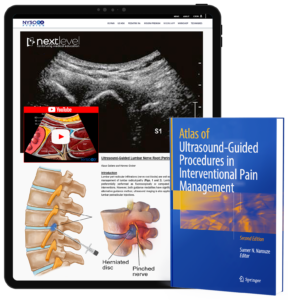
Atlas of Ultrasound-Guided Procedures in Interventional Pain Management , Review
Introduction “Atlas of Ultrasound-Guided Procedures in Interventional Pain Management” Atlas of Ultrasound-Guided Procedures in Interventional Pain Management was a huge undertaking. For much of the past decade, fluoroscopy held sway as the favorite imaging tool of many practitioners performing interventional pain procedures. Quite recently, ultrasound has emerged as a “challenger” to this well-established modality. The growing popularity of ultrasound application in regional anesthesia and pain medicine reflects a shift in contemporary views about imaging for nerve localization and target-specific injections. For regional anesthesia, ultrasound has already made a marked impact by transforming antiquated clinical practice into a modern science. No bedside tool ever before has allowed practitioners to visualize needle advancement in real time and observe local anesthetic spread around nerve structures. For interventional pain procedures, I believe this radiation-free, point-of-care technology will also find its unique role and utility in pain medicine and can complement some of the imaging demands not met by fluoroscopy, computed tomography, and magnetic resonance imaging. And over time, practitioners will discover new benefits of this technology, especially for dynamic assessment of musculoskeletal pain conditions and improving accuracy of needle injection for small nerves, soft tissue, tendons, and joints. Ultrasound application for pain medicine is an evolving subspecialty area Most conventional pain interventionists skilled in fluoroscopy will find it necessary to undertake some special learning and training to acquire a new set of cognitive and technical skills before they can optimally integrate ultrasound into their clinical practices. Although continuing medical educational events help facilitate the learning process and skill development, they are often limited in breadth, depth, and training duration. This is why the arrival of this comprehensive text, Atlas of Ultrasound-Guided Procedures in Interventional Pain Management, is so timely and welcome. To my knowledge, this is the first illustrative atlas of its kind that addresses the

